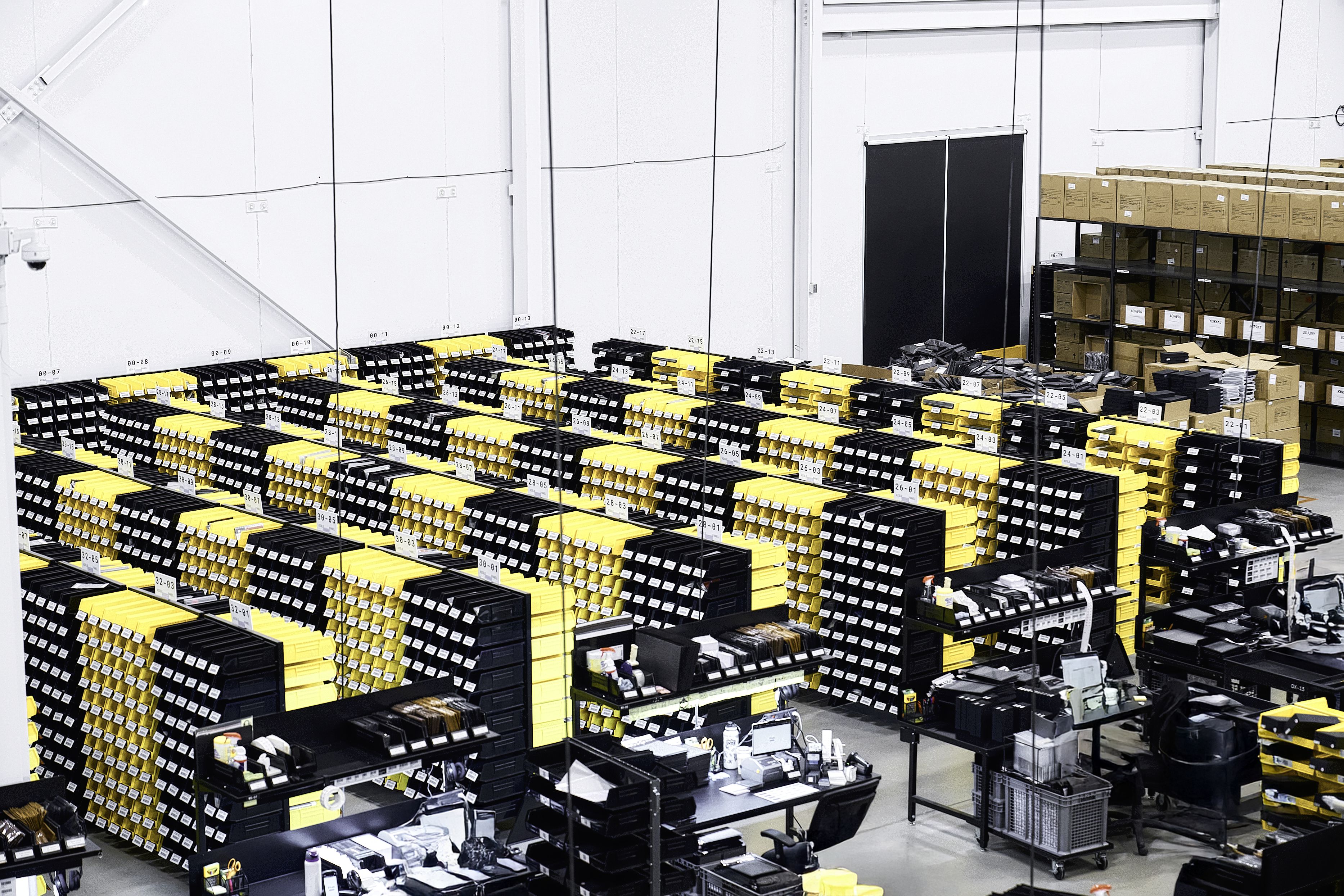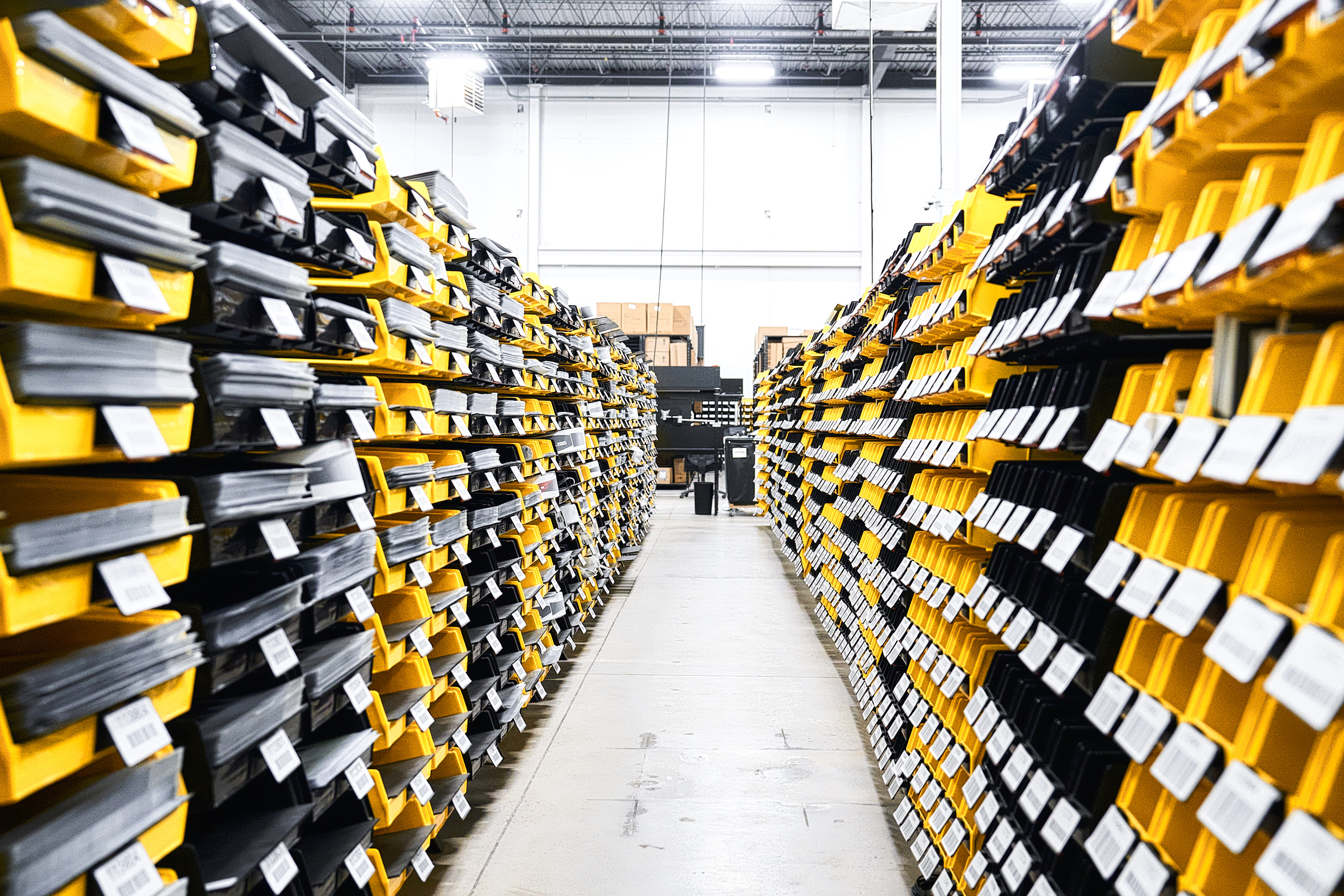How dbrand Ditched Their Failed Legacy ERP and Tripled Order Capacity in Just 2 Months

Every scaling business reaches the same crossroads: upgrade your systems to support growth, or risk being strangled by operational complexity.
dbrand, a Toronto-based manufacturer of premium phone cases, faced this exact scenario in 2024. The company, which typically excels at precision and efficiency, found themselves battling a comprehensive enterprise ERP implementation that went live in June – and immediately created more problems than it solved.
Orders were shipping to customers who had canceled them. The production team lost visibility into inventory levels. Finance was manually reconciling data across three disconnected systems. With Black Friday just months away, dbrand had to make a critical decision: attempt to fix the failing system or start over completely. They chose to rebuild from scratch in just two months.
The results were immediate and dramatic:
- Out-of-Stock Elimination: Reduced from 200-500 daily incidents to just 1-2 per day
- Daily Capacity: Scaled from shipping 2,000 orders per day to shipping 6,000-7,000 orders in a single shift
- Weekly Record: 2000% increase in order fulfillment during Black Friday/Cyber Monday, marking a new record in throughput
- Productivity: Daily order processing improved from 150-200 to 175-200+ orders per associate

Growing Pains: When Custom Systems Can't Scale
dbrand had built a successful business with 15,000-30,000 SKUs across different device models and designs. The company had outgrown its custom-built Drupal 7 system that served as both eCommerce platform and ERP backbone.
"We were running it like a custom built ERP solution on the back end of an eCommerce platform," explains Robot 090, CFO and COO. "The complexity we were able to realize allowed us to create kind of bespoke solutions and solve problems, but it created long-term problems because of the complexity."
The company's warehouse in Mississauga managed inventory across 18,000-19,000 bins, but without proper visibility. Production Manager Robot 045 describes the reality: "The biggest challenge really was not knowing what quantity was in the bins at any given time. Not being able to know what's in the bins means that we don't know how much to produce or if something's about to be out of stock."
As Robot 051, Warehouse General Manager, reports: "There was a snowball effect that was happening. Whenever we go through a peak season and a lot of skins start selling out, production would only focus on those. And in the meantime, other SKUs will go out of stock."
The Failed Solution: Enterprise ERP Implementation Disaster
{{review2-component}}
In early 2024, dbrand implemented NetSuite as their ERP alongside Korber WMS, with Celigo serving as middleware to connect all systems. The six-month implementation went live on June 1, 2024, but problems emerged immediately.
Robot 090 explains: "Once we went live on June 1st, there was a month of learning where we realized what was our problem and what was the system's problem. After the month, we realized this was a system problem."
The issues were multifaceted
Integration Complexity: The three-system architecture created constant data synchronization issues where each platform maintained different information. "You have to remember that the WMS's inventory might show one thing, but the ERP's orders show something different, and Shopify orders might show yet another number. There's a different source of truth in all three systems," explains Robot 051. Orders from the ERP wouldn't properly sync to the WMS, creating discrepancies that made it impossible to trust any single system's data.
Unexpected Costs: NetSuite's pricing model revealed hidden complexities after contract signing. "They originally said, 'Yes, this solution will work for you.' And then once we went to implement it, they go, 'Oh, no, you need to upgrade 3+ more solutions in order to get the solution to work for you,'" Robot 090 notes. Diagnostic tests revealed that dbrand's transaction volume required additional Cloud Plus licenses beyond the original scope. "And that will cost you this. And this module will be added here. And this will allow you to run depreciation. And then this module will allow you to actually track order volume," Robot 090 recalls, describing the cascade of additional costs for basic functionality that was supposedly covered in the initial agreement.
Operational Inefficiencies: Robot 126, Order Experience and Shipping Team Lead, describes the costly communication failures: "A customer would cancel an order in Shopify, for instance. That communication would get stuck in NetSuite and then that wouldn't be communicated down. So we'd end up shipping an order that was canceled." This resulted in customers receiving free products while dbrand absorbed both the product cost and shipping expenses, directly impacting profitability during high-volume periods.
The Right Solution: How Fulfil Delivered What NetSuite Couldn't

After just one month with NetSuite, dbrand began evaluating alternatives. The decision to switch to Fulfil came down to several key factors:
Single Platform Integration: Unlike the fragmented NetSuite approach, Fulfil offered a complete ERP solution with warehouse management, order management, inventory management, manufacturing, accounting, and financial reporting all in one integrated system, eliminating the need for multiple platforms and middleware.
eCommerce Expertise: Robot 051 notes: "Fulfil’s functionality worked a lot better for our operation. If I wanted to combine my shipping and packing, it already had that capability."
Implementation Speed: Despite the short timeline, Fulfil committed to having dbrand live before their crucial Q4 season.
Implementation Excellence: 2 Months vs. 6 Months
{{review3-component}}
Starting in early September 2024, dbrand went live with Fulfil in October – a complete implementation in just two months.
Robot 051 describes the initial skepticism: "I was very skeptical about the whole thing. They’d say we’d have one meeting on a topic, and I'm like, is that it? Are you sure you're going to integrate Aramex within two weeks of go-live, and it's going to work from day one?"
The streamlined approach was possible because of Fulfil's deep eCommerce expertise and proven implementation methodology. Having completed similar implementations for other high-volume brands, the team understood the specific workflows and challenges of modern eCommerce operations. "The implementation was very smooth," Robot 051 reflects.
Key Implementation Highlights:
- Timeline: 2 months vs. 6 months with NetSuite
- Training Reduction: Reduced from one week to two days for new team members
- Carrier Integration: While most carriers had native integrations, the team completed custom Aramex development within two weeks of go-live, adding to their existing multi-carrier setup including Wizmo, Purolator, FedEx, and DHL
- System Complexity: Single platform without middleware vs. three separate systems requiring middleware
Immediate Impact: Scaling Through Peak Season

The implementation was tested immediately during their busiest season while managing a massive six-figure product replacement program.
Performance Metrics:
- Daily Capacity: Scaled from shipping 2,000 orders per day to shipping 6,000-7,000 orders in a single shift
- Weekly Record: 2000% increase in orders fulfilled during Black Friday/Cyber Monday
- Productivity: Daily order processing improved from 150-200 to 175-200+ orders per associate, with peak performers reaching 300 orders
Robot 126 notes the improvement in daily order processing targets: "The KPI metric that they were supposed to be hitting was 150 to 200. With the new implementation, we were able to bump that up. So now the KPI is between 175 to 200 orders per day."
Operational Transformation: Single Source of Truth
{{review4-component}}
The most significant change was achieving a single source of truth across all operations. Robot 090 emphasizes: "Having the WMS and the ERP and the production module so closely connected allows me to trace an error on the operations side all the way through and connect it from start to finish with everyone in one solution."
Warehouse Management Revolution
Automated Batching: "Before, a robot would have to come in two hours before and manually put these orders together," Robot 126 explains. "Whereas now we set up the filters and the batches, and you just hit create, and they just go."
Inventory Visibility: Robot 051 describes the change: "Before, there was a lack of trust in our numbers. Now that source of truth lives in the system."
Process Efficiency: The picking and packing workflow was streamlined, eliminating the manual sorting and separate shipping steps that plagued the previous system.
Production Management Enhancement
Robot 045 implemented Fulfil's production module in January 2025: "Every single person is accountable for their workstations and for the work that they do. There is no hiding what you did, how long it took you, and if there were any errors in the process."
The system now provides real-time inventory visibility that allows production planning to work backwards from demand, eliminating out-of-stock situations. Instead of urgent short production runs triggered by empty bins, the team can now plan full production runs based on actual inventory levels and sales velocity, ensuring products stay in stock while dramatically reducing production downtime and eliminating costly changeover time between short runs.
Financial Management Benefits
{{review5-component}}
Complete Financial Operations Migration: The company migrated their complete financial operations to Fulfil, including general ledger, accounts payable, accounts receivable, and monthly book closing processes.
Single Source of Truth for Financial Data: The integrated system eliminated the data reconciliation nightmare that plagued the NetSuite implementation, providing complete visibility across all operations. Robot 090 explains how the data warehouse transformed financial decision-making: "My favorite feature is the data warehouse of Fulfil. It's the fact that you can go granular into so much data and you can pull out whatever you want, whenever you want it." This granular access enables critical business decisions: "If I ask a question, you can get an answer," whether analyzing product retirement decisions, manufacturing costs, or inventory performance across their complex SKU structure.
Data Integrity and Reconciliation: Fulfil provided reliable real-time financial data that eliminated the reconciliation nightmare of the previous fragmented setup. Unlike the NetSuite ERP, Korber WMS, and Celigo middleware combination that created data discrepancies requiring extensive manual corrections, Fulfil's integrated platform ensured data integrity for clean period closes. “From a finance component side, I found that Fulfil had the ability to give me real-time data to make decisions where needed,” Robot 090 notes.
Revenue Recognition Automation: The integrated system automated previously manual revenue recognition processes. "With any ERP, the fidelity on your revenue recognition is easier, but with Fulfil, it's basically automated," Robot 090 explains.
FIFO to Weighted Average Transition: The transition from FIFO costing to weighted average costing proved seamless for dbrand's operations. Robot 090 approached it pragmatically, noting that while FIFO costing might be preferred industry-wide, the operational benefits of Fulfil's integrated system far outweighed any accounting methodology concerns.

Measurable Benefits
Cost Reduction
- Reduced system complexity and maintenance overhead
- Consolidated multiple software licenses into a single platform
- Reduced middleware costs and complexity
Inventory Management
- Out-of-Stock Reduction: "That number is now like one or two a day, which used to be around 200 to 500 a day," Robot 090 reports, referring to daily out-of-stock incidents.
Team Efficiency
- Training Time: Reduced from one week to two days for new operators
- Order Processing: Individual productivity increased from 150-200 to 175-200+ orders per day
- Scalability: Ability to quickly onboard temporary operators during peak seasons
Data and Reporting
The data warehouse provides unprecedented analytical capabilities that were impossible with the fragmented NetSuite setup. This enables faster, more informed decision-making across all departments without requiring specialized technical expertise.
Looking Forward: Sustainable Growth Foundation
{{review6-component}}
One year after implementation, dbrand's operations have seen approximately 50-60% increase in daily order volume year-over-year while maintaining operational efficiency.
Robot 051 reflects on finding the right partner: "I would say Fulfil is exactly what we need - people who think the way we think, and they're able to pull resources very quickly."
The system's flexibility has proven crucial for adapting to changing needs in operations. As new products launch for emerging device models, the team feels confident in their operational capabilities to scale and adapt quickly.
Key Success Factors
Several factors contributed to dbrand's successful transformation:
- Integrated Architecture: Single platform eliminated data sync issues and complexity, crucial for coordination
- eCommerce Expertise: Fulfil's understanding of modern eCommerce operations suited to automated workflows
- Implementation Partnership: Collaborative approach with consultative guidance
- Change Management: Leadership commitment to adapting processes to system best practices rather than forcing custom requirements.
- Team Adaptability: Willingness to adapt processes to system best practices
What dbrand's Success Means for Other Growing Brands
dbrand's journey demonstrates the importance of choosing the right technology partner for eCommerce operations. By replacing a fragmented enterprise ERP implementation with Fulfil's integrated platform, the robot-operated company achieved:
- 2-month implementation vs. 6-month failed deployment
- Single source of truth across all operations and financial management
- 3x daily capacity increase during peak periods
- 99% reduction in out-of-stock incidents
- Complete financial operations integration alongside operational systems
- Foundation for sustainable robotic growth
As Robot 090 concludes: "I found it just such a “breath of fresh air” to have someone who was knowledgeable. You had all of the resources that were required to make us successful, and I felt like the confidence that you had in making us successful was not confidence that was unfounded, because you've seen it run, and you knew our system well enough to know what would work."
For growing eCommerce brands with complex operations facing similar challenges with legacy ERPs like NetSuite, dbrand's experience shows how the right ERP can improve operations and create competitive advantages in automated environments.
{{demo-component}}
Get Your Free Guide to Ecommerce ERP
Get started easily with a personalized demo





%201.png)